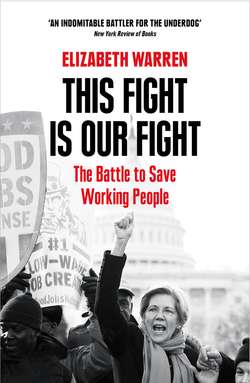Читать книгу This Fight is Our Fight: The Battle to Save Working People - Elizabeth Warren - Страница 16
2 A Safer Economy
ОглавлениеThe story of rigging the American economic system doesn’t start with “What went wrong?” It starts with “What went right?”
America—like much of the world—had a boom-and-bust economy from the very beginning. George Washington was in his second term as president when, in 1796, a real estate bubble and resulting collapse shook the young country and hurtled it into a major financial crisis. Then, one after another, the booms and busts moved in cycles of about twenty years each. Land speculation, currency speculation, railroad speculation, and even speculation about war—all these triggered panics at one time or another. The specific details varied, but the overall pattern was clear. The economy would grow a bit, people would do a little better, and then speculation would start to bubble up. The promise of greater riches was like a song that started softly but soon got louder and more insistent—right up until the moment the music stopped and everyone ran for the exits.
Crashes came hard. They brought down many of the speculators, and millionaires sometimes watched their fortunes disappear with the delivery of a single letter or the loss of one ship. The busts bankrupted farmers as well as small business owners, who were caught short when prices dropped without warning or banks collapsed. The crashes hit factory workers and shop clerks, carpenters and ranch hands, leaving millions without work and struggling to feed themselves and their children.
From the 1790s to the 1930s, America had a boom-and-bust economy.
From the 1790s to the 1930s, America’s boom-and-bust economy was like a natural rhythm of the universe, sweeping in good fortune like a benevolent tide, then sucking it back out again with terrible ferocity.
